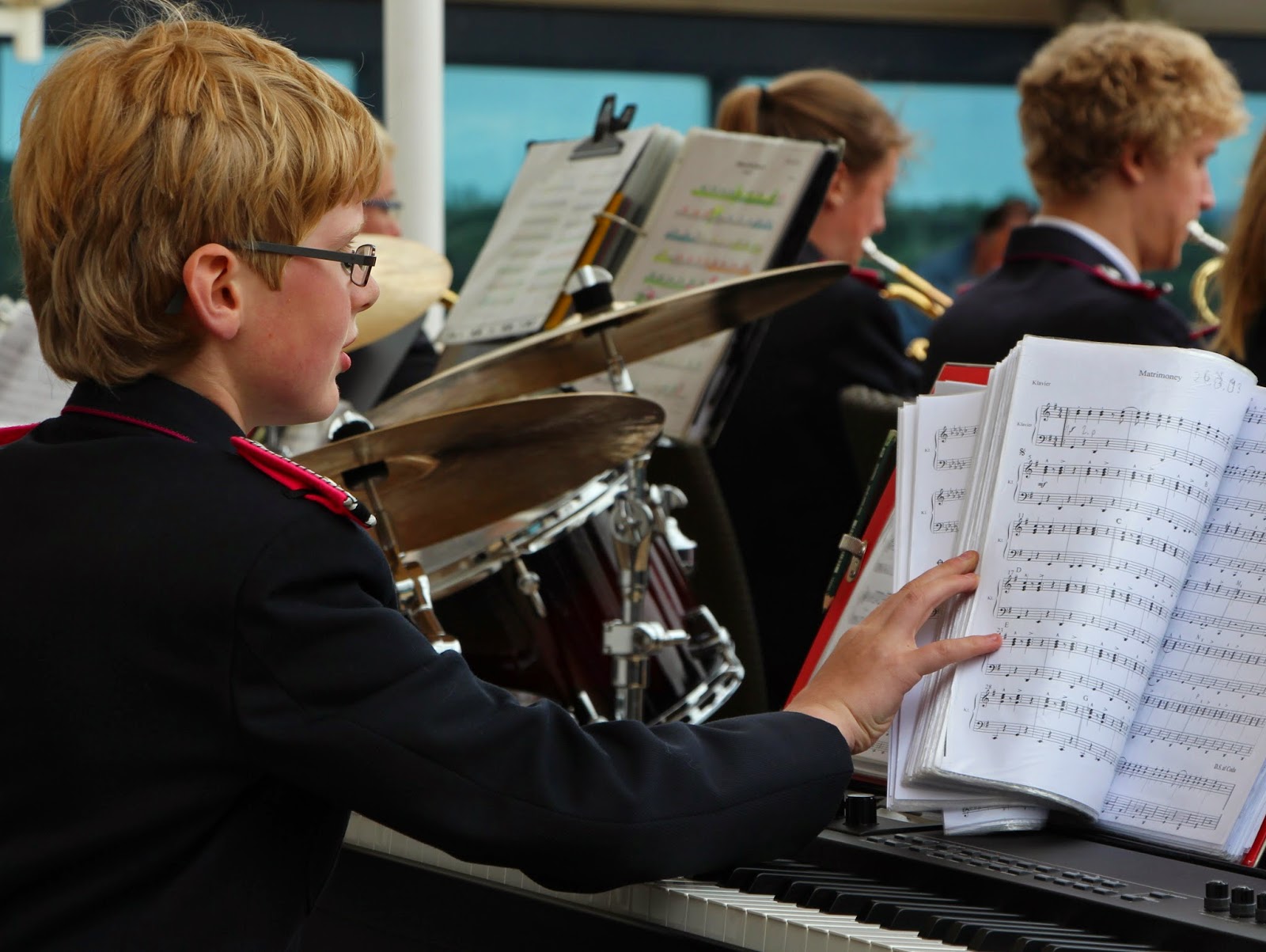 |
| Preparing the lock in Brunsbuttel for the ten hour transit of the Kiel Canal |
 |
| Motorcraft tie up against larger vessels |
Another interesting fact is that Kiel’s harbour has annually hosted the world’s largest regatta ever since the Canal opened.
Approximately 120 ships make the Canal transit each day, saving themselves a
400 mile detour around the top of Denmark. Ten major bridges, a
rail viaduct and a road tunnel pass across the Canal and there is a great deal of ferry
traffic.
 |
| Ready for the off! |
 |
| Sharing a joke between tunes |
When operations resumed we were fascinated by the various craft that entered the locks with us - cargo containers, bulk carriers, oil tankers and all manner of small sailing vessels.
 |
| A dairy farmer, volunteer fire fighter and pretty good on the French Horn |
The band was fantastic and the musicians lots of fun. One of the band members told us she was a dairy farmer while another, who spoke English with absolutely no accent at all, told us she had been a nanny in Vancouver.
 |
| Sun sets over the Canal |
 |
| The ship's photographer captures a nice moment |
Wind turbines turned lazily in half hearted unison while the sounds of singing birds added to the calm of the transit. Swans and ducks swam effortlessly in the ship’s wake, unfazed by the procession of shipping.
 |
| Martinis and Canapes to start .... |
One of Rangsan’s specialty Vesper martinis appeared served with canapés.
 |
| Several hours later ....... |
This was followed by Black & Blue French Onion Soup, Goat Cheese and Candied Walnut Salad, Beef Tenderloin with Asparagus and Mushrooms followed by a sinfully rich chocolate dessert and cheese selection.
The Merlot did a fine job of accompanying the dinner, so much so, the champagne remained unopened.
A mighty fine way to travel from sea to sea.










































